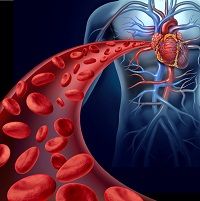Article
Older Age and Hypertension Associated with More Oral Anticoagulant Use in Patients with Atrial Fibrillation
Author(s):
Analysis of cardiovascular registry data comparing components of the CHA2DS2-VASc score and oral anticoagulant use also found that women and patients with vascular disease were less likely than other patients with atrial fibrillation to be prescribed anticoagulation that is now indicated by standard guidelines.

Analysis of cardiovascular registry data comparing components of the CHA2DS2-VASc score and oral anticoagulant use found that women and patients with vascular disease were less likely than other patients with atrial fibrillation (AFib) to be prescribed anticoagulation that is now indicated by standard guidelines.
Investigators tabulated data from 706,308 patients who visited cardiologists between 2010 and 2014, comparing actual anticoagulant prescriptions to the current recommendation of anticoagulation for all patients who score 2 or higher on the CHA2DS2-VASc scale.
The patients included in the study all had CHA2DS2-VASc scores of 2 or higher, so anticoagulation would now be indicated across the board, but the analysis found that patients with certain risk factors were significantly more likely to receive treatment than patients with other risk factors.
After adjustment for demographics, known risk factors, modified HAS-BLED scores and other variables, women and vascular disease patients were less likely than average to receive anticoagulation. Female sex was associated with a 0.79 odds ratio [OR] of treatment (95% confidence interval [CI], 0.78 to 0.80; p < 0.001), while a history of vascular disease was associated with 0.91 OR of treatment (95% CI, 0.85 to 0.96; p = 0.001).
Higher-than-average odds of treatment were associated with all other risk factors included in the CHA2DS2-VASc scale: hypertension (OR, 2.57; 95% CI, 2.46 to 2.69, p < 0.001), age 65 to 74 (OR, 3.35; 95% CI, 3.20 to 3.51; p < 0.001), age 75+ (OR, 3.36; 95% CI, 3.21 to 3.52; p < 0.001), congestive heart failure (OR, 1.31; 95% CI, 1.29 to 1.33; p < 0.001), type 2 diabetes (OR, 1.17; 95% CI, 1.15 to 1.18; p < 0.001) and stroke or transient ischemic attack (OR, 1.32; 95% CI, 1.28 to 1.36; p < 0.001).
“Among this cohort of AFib patients with an indication for oral anticoagulant use, older age and hypertension were strongly associated with greater oral anticoagulant use whereas female gender and vascular disease were associated with less oral anticoagulant use,” the investigators wrote in an abstract they presented at American Heart Association’s 2016 conference on Quality of Care and Outcomes Research in Cardiovascular Disease and Stroke. “Further investigation is needed to understand reasons for these differences in how risk factors influence decisions to provide oral anticoagulation, such as patient or provider preference or gender bias.”
There are, of course, many reasons other than gender bias that could have affected decisions about oral anticoagulation, the investigators noted. For example, studies have long found that women with untreated AFib face a higher risk of thromboembolic events than untreated men, but the CHA2DS2-VASc scale — which specifically includes female sex as a risk factor — did not become a part of official guidelines until 2014. The previous CHADS2 scale, which was in effect for nearly all of the study period, did not take patient sex into account, so it did not recommend anticoagulation for many women that qualify for treatment under the newer scale.
The CHA2DS2-VASc scale assigns patients with AFib 1 point each for a history of Congestive heart failure, Hypertension, Diabetes mellitus, and Vascular disease, along with a single point for Age between 65 and 74 and Sex Category female. It also assigns patients 2 points for a history of Stroke, transient ischemic attack or thromboembolism and 2 points for Age over 75 years.




